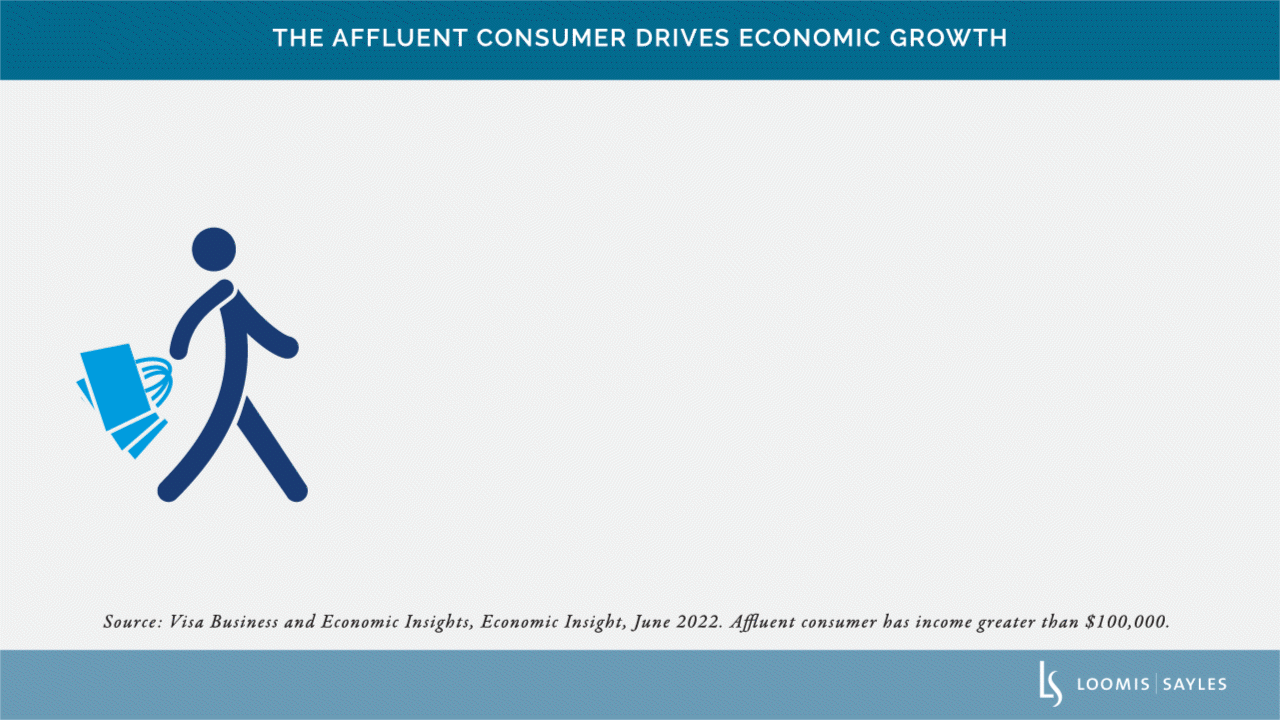Consumer behavior is currently under a magnifying glass, as capital market tumult and inflation rising along with interest rates fuel yet another wave of uncertainty. From my perspective, the consumer’s financial balance sheet is strong and well-positioned to weather any potential storm. Overall, fundamentals remain stable and within historical norms despite higher grocery and gas prices in addition to government stimulus having waned.
Positive trend among affluent consumers
Economic growth is driven by the more affluent consumer. This segment tends to spend more and be a larger driver of top-line economic numbers. According to Visa Business and Economic Insights, as of 2019, the affluent segment was 27% of the consumer base but accounted for 47% of total consumer spending.[i] This segment is in strong financial health with credit scores migrating upward. Affluent households have posted strong gains in net worth and wages since 2021—a possible indicator of future spending.

The divided consumer segment persists
A significant development during the pandemic was the bifurcation in the consumer base. High-income consumers who were able to work from home built up savings, paid down debt and were able to improve or stabilize their situations. In contrast, lower-income consumers really struggled. They had the benefit of government support to help them through the pandemic, but that has ended. Now it's definitely more of a struggle for them.
Most existing debt is fixed-rate
While higher interest rates may add pressure to a consumer’s financial situation, we believe it should have a minimal impact on existing debt as most is fixed-rate. For example, according to Equifax as of April 2022, mortgage debt[ii] was primarily fixed-rate and totaled $11.44 trillion (72.7% of total consumer debt). Adjustable-rate mortgages were just 1% of outstanding mortgages at the end of March, down from a high of 12% during the global financial crisis.[iii]
The majority of non-mortgage household debt is auto loans and student loans, which are primarily fixed-rate.
Only credit cards have floating rates, and total bank credit card debt was 19.5% of total non-mortgage debt. Bank of America estimates additional debt repayments resulting from higher interest rates on new card originations and floating-rate debt payments will be between $450 to $510 per household (0.30%-0.35% of disposable income) in 2022.[iv]
Potential alarm bells
In my view, revolving debt levels can really tell you about the consumer's ability and willingness to spend. In our research experience, consumers will spend up to their debt limit, but when it stops, it stops. We currently see debt levels nearing pre-pandemic levels and climbing. It's something we're watching very closely.

[i] Visa Business and Economic Insights, Economic Insight, June 2022. Affluent consumer has income greater than $100,000.
[ii] Includes home equity loans and home equity lines of credit, which are typically variable and 2.6% of total outstanding mortgage debt.
[iii] Equifax, as of April 2022.
[iv] Bank of America Institute, as of 19 May 2022.
MALR029175





